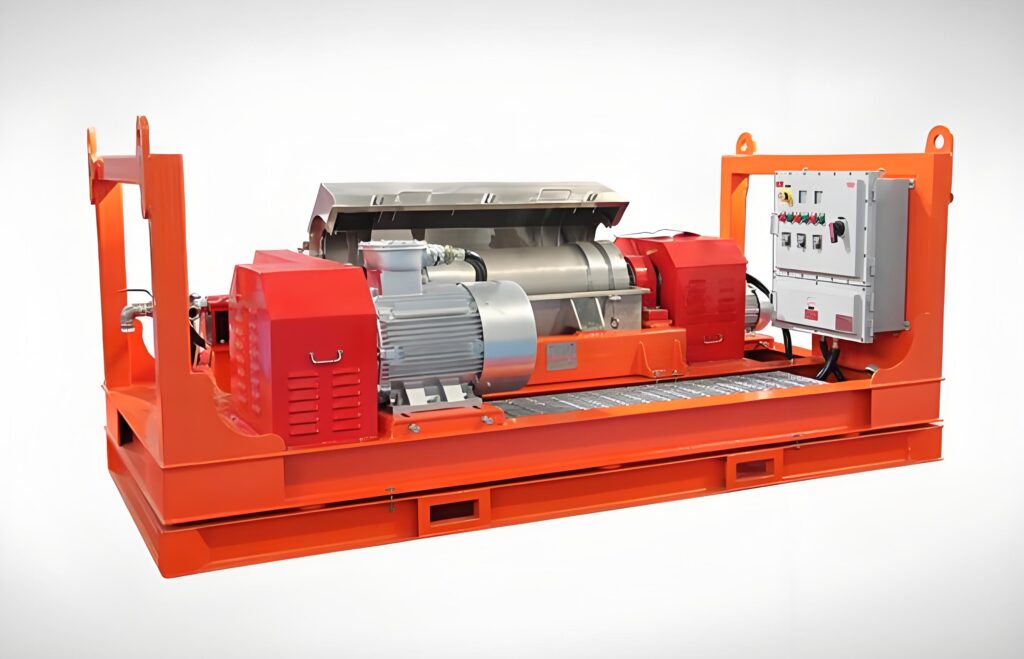In oilfield drilling, the mud solid control system plays a critical role in maintaining the efficiency and safety of operations. One key component of this system is the drilling fluid centrifuge, which is used to separate suspensions containing solid particles with a diameter of ≥2μm. Positioned as the final stage of separation after the shale shaker and desander, the centrifuge ensures that drilling fluid (mud) is properly processed for optimal performance.
Drilling fluid centrifuges are classified into three types based on their separation factor: low-speed, medium-speed, and high-speed centrifuges. Each type serves a specific purpose depending on the drilling conditions and mud treatment requirements. Below, we’ll break down these three types in a way that’s easy to follow and tailored to practical use.

1. Low-Speed Centrifuge: The Barite Recovery Workhorse
Also known as the "barite recovery centrifuge", the low-speed centrifuge operates with a separation factor of 500–700. It’s designed to separate:
- Low-density solids at a cut point of 6–10μm.
- High-density solids at a cut point of 4–7μm.
This centrifuge is primarily used to recover barite, a valuable weighting agent in drilling mud, which is why it’s often called the barite recovery centrifuge. By reclaiming barite, it helps reduce costs and maintain the mud’s desired properties for efficient drilling.
2. Medium-Speed Centrifuge: The Go-To for Mud Control
The medium-speed centrifuge, with a separation factor of around 800, is capable of separating solids as small as 5–7μm. This type is the most commonly used in drilling rig solid control systems because it effectively:
- Removes harmful solids from the mud.
- Controls the mud’s specific gravity and viscosity.
Known as the petroleum solid control centrifuge, it’s a reliable choice for maintaining the quality of drilling fluid in most wellsite operations, striking a balance between performance and practicality.
3. High-Speed Centrifuge: Precision for Harmful Solids Removal
High-speed centrifuges operate with a separation factor of 1200–2100 and can handle solids down to 2–5μm. These are typically used to:
- Eliminate harmful solids that negatively impact mud performance.
- Fine-tune the mud’s viscosity for optimal circulation.
High-speed centrifuges are often paired with low-speed centrifuges in a dual-machine system for maximum efficiency. Here’s how it works:
- The low-speed centrifuge (first stage) recovers barite, returning it to the mud tank for reuse. The separated liquid is discharged into a buffer tank.
- A pump then transfers the liquid from the buffer tank to the high-speed centrifuge (second stage). The high-speed centrifuge removes finer harmful solids, which are discharged outside the system, while the cleaned liquid is returned to the mud circulation system.
This dual-machine setup is a smart way to both recover valuable barite and prevent the wasteful loss of drilling fluid while effectively removing unwanted solids. It’s a common configuration in drilling mud stations and rig solid control systems.
Choosing the Right Centrifuge
Selecting the appropriate centrifuge—low-speed, medium-speed, or high-speed—depends on the specific drilling conditions and the desired mud treatment outcomes. Each type plays a vital role in ensuring the drilling fluid remains effective, safe, and cost-efficient.
In summary, drilling fluid centrifuges are indispensable in modern oilfield operations. Whether you’re recovering barite, controlling mud properties, or fine-tuning the system with a dual-machine setup, these machines keep your drilling process running smoothly.

